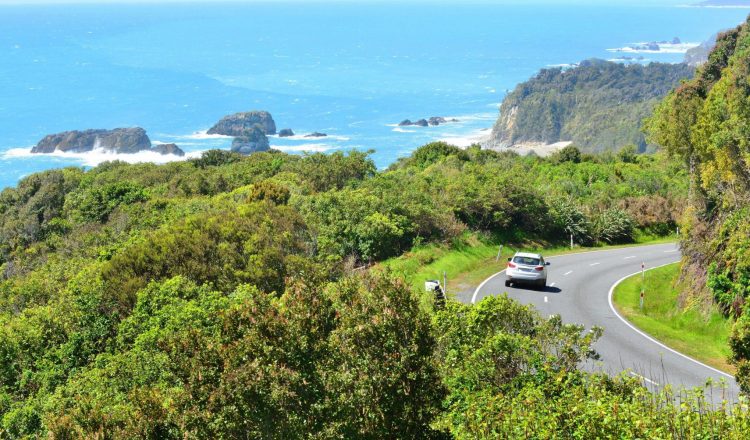トンネルの安全性
トンネルは移動の利便性を高める一方で、狭い空間やアクセス・脱出経路が制限されているため、特有の課題やリスクがあります。そのため、トンネルを走行する際には、特に安全性に注意する必要があります。
トンネルを走るときの心得
- 警戒を怠らないこと。
- 自分の車線を守り、車線変更は避けましょう。
- 速度は規定の範囲内にとどめましょう。
- 前方の車両から安全な距離を保ちます。
トンネル内で事故に巻き込まれた場合は:
- ラジオをつけてください。
- ラジオや放送局の指示や、標識に表示されたメッセージをよく聞き、それに従ってください。
- トンネル内で避難が必要になった場合は、すぐに車を降りて、指示された出口や安全な場所に速やかに移動し、待機してください。
ニュージーランドでトンネル内を走行する際の注意点は?
トンネル内での事故のリスクを減らすためには、ドライバーの優れた行動が重要な役割を果たします。ニュージーランド運輸局は、すべてのドライバーに対し、ニュージーランド国内のトンネルを走行する際には、特に注意するように呼びかけています。
トンネル内では:
- 十分な注意を払うこと
- 制限速度を守り、交通局の規則に必ず従うこと – トンネル内の速度制限は施行されています
- 前方の車との距離を保つこと – 最低でも2秒の間隔を空けてください
- 複数の車線があるトンネルでは、車線変更は避けること – これにより、トンネル内の全員の安全性が向上します。
- 標識に表示された指示に従い、制限速度の変更に注意すること
- 特に交通量の多いピーク時には、急ブレーキをかけないようにすること渋滞を緩和する
- トンネルの入口や出口で合流する際には、特に注意し、余裕を持って出口車線に移動してください。
- 天候に応じて適切な運転をし、強風や大雨のときにトンネルを抜けるときは特に注意してください。
次のような場合は、トンネルでの走行が禁止されています。
- 燃料が不足している場合
- 車両が故障する恐れがある場合
- 安全が確保されていない荷物を積んでいる場合 – 走行を開始する前に荷物が安全に固定されていることを確認してください – 安全が確保されていない荷物には罰則が適用される場合があります。
- 事故や緊急事態のためにトンネルが閉鎖された場合
- 危険物の輸送が禁止または制限されている場合。危険物に関する詳しい情報は以下のセクションをご覧ください。
- 車両または荷物の高さがトンネルの車高制限を超えている場合 – お客様のルートに適用される地域の車高制限を確認してください。
- あなたが歩行者、自転車、電動スクーターである場合(歩道が設置されているヴィクトリア山のトンネルを除く)
トンネルに入るときはどうすればいいですか?
トンネルに入るときは:
- ラジオや他の交通情報サイトで最新の交通情報や重要な交通情報を聞くいてください
- ヘッドライトを点灯させましょう
- サングラスを外してください(度付きのメガネが必要な場合を除く)
- すべての交通標識、交通信号、舗装表示に従ってください
- 複数の車線があるトンネルでの車線変更を避けます
- 制限速度や交通の流れを守り、たとえ交通の流れが悪くても、前の車と安全な距離を保ちましょう。最低でも2秒以上の間隔を空けてください。
車が故障したり、トンネル内で事故を起こしたりした場合はどうすればいいですか?
トンネル内で故障したり、衝突したりして、自分の車で安全にトンネルを出られない場合は、次のようにしてください。
- 路肩の安全な場所に車を止めて、できるだけ交通の邪魔にならないようにします
- ハザードランプを点灯し、落ち着いて事故処理班や警察の到着を待ちましょう。オペレーターはカメラであなたを監視しています。オペレーターからのメッセージを放送で聞いてください
- 火災やトンネルからの退避指示がない限り、車内で待機するか、車の前や横断歩道がある場合はそこで安全に待ちます
- 不安になったり、オペレーターが自分を見ていないと感じた場合は、最寄りの緊急電話を使ってトンネルの制御室に助けを求めますが、その際には交通状況に注意してください。また、一部のトンネルでは、携帯電話からかけられる管制番号が表示されています(Waterview call 0800 tunnel)。
避難が必要な緊急事態が発生した場合は、ランニングマンのマークや点滅するライトを見て安全な出口を探し、標識に従って行動し、公共放送やラジオからの指示に従ってください。安全な出口は、トンネルの入口または出口から直接出ることができます。
トンネル走行中に渋滞に巻き込まれた場合はどうすればいいですか?
トンネル走行中に交通渋滞に巻き込まれた場合は、以下の点に注意してください。
- 頭上の標識に表示された指示を確認する
- ラジオで最新情報や重要な交通情報を聞く – トンネル内のラジオでオペレーターやPAから特定のメッセージが放送されることがあります
- 窓を閉めて、エアコンのスイッチを入れて空気を循環させましょう。長時間待たされる場合は、エンジンを切り、交通機関が再び動き出すのを待ちます。こうすることで、トンネル内のガスの量を減らすことができます。
- 緊急の支援が必要な場合は、路肩に車を止め、最寄りの緊急電話でトンネルの制御室に連絡してください(車から降りる際には交通状況に注意してください)。また、現地の連絡先が記載されている場合は、制御室のヘルプラインに電話してください。
走行中のトンネル内で火災が発生した場合はどうすればいいですか?
トンネル内での火災は、他の交通機関の乗員に煙の影響を与える可能性があり、非常に危険です。
火災が発生した場合には、すぐに車を降りて、避難経路の指示に従って徒歩で避難してください。あなたにとっての直接的なリスクは、火災による煙です。
運輸局(Transport Agency)はトンネルを監視しており、火災などが発生した場合に対応します。トンネル内で煙や火災を発見した場合は、運輸局のオペレーターが火災報知機やラジオの再放送システム、電光掲示板の緊急避難メッセージなどを使って、トンネルを閉鎖し、避難させます。
トンネル内に避難している場合は:
- ルートに問題がなければ、直ちにトンネルを出て事故現場から離れ、支援のために停車してはいけません。
- ルートがはっきりしない場合は、車を停めてエンジンを切り、鍵は車の中に置いておきます。
- トンネルを出るときは、指示された最も近いルート(トンネルの入口または出口の場合もある)を通りましょう。
- 拡声装置で他の指示を聞いてください。安全な場所で待機し、救急隊の指示を待ちます。
車両が火災になった場合:
- 道路の左側に寄って車を停めます
- エンジンを切り、車から降りて、通行人に注意します
- すぐに助けを求めてください。すぐに111番に電話するか、最寄りの緊急電話に行ってオペレーターに連絡してください。自分を危険にさらさないでください。
- オペレーターはカメラに映った事故の状況を把握しており、拡声装置を使ってあなたに連絡を取ります。トンネル内に避難したり、消火のために放水システムを使用することもあります。
- 指示に従って車から離れ、安全な場所に移動してください。
なぜ一部のトンネルではスピードカメラが使われているのですか?
スピードカメラはニュージーランド警察が操作しています。
スピードカメラは、過去に事故歴があったり、スピードに関連した事故の危険性がある道路に設置、使用されています。トンネルはその性質上、スピードを出して通過すると危険性が高くなります。トンネル内のスピードカメラは、制限速度内での運転を促し、事故のリスクを軽減します。
トンネル内での最よく起こる危険は、車両の故障や衝突であり、それによって重傷を負ったり、また火災が発生することもあります。スピードを出すと、これらの危険が不意に現れたときの反応時間が短くなります。
トンネル内での事故は、人命、渋滞や遅延、汚染、修理費用などの面で非常に大きな負担となります。また、トンネルは密閉された環境であるため、救急隊員の救助活動も複雑になります。
トンネル内での危険物および大型車両に関する違反行為
ウォータービューおよびすべてのウェリントン・トンネルでは、危険物の通過が禁止されています。
リトントンネルとホーマートンネルでは、危険物の通過は許可制となっており、特定の時間帯のみの通過となっています。
ヴィクトリア・パーク・トンネルやジョンストーンズヒル・トンネルで大量の危険物を運ぶ場合は、一般道路と同様に道路交通規則に基づいたプラカードを表示する必要があります。プラカード積載禁止の標識があるトンネルで、プラカード積載の危険物を運ぶことは犯罪です。

















































